2013/02/01
294. zenbakia

eu es fr en cat gl
Aparecerá un contenido traducido automáticamente. ¿Deseas continuar?
Un contenu traduit automatiquement apparaîtra. Voulez-vous continuer?
An automatically translated content item will be displayed. Do you want to continue?
Apareixerà un contingut traduït automàticament. Vols continuar?
Aparecerá un contido traducido automaticamente. ¿Desexas continuar?
Asian wasp in bee hunting
Text created by automatic translator Elia and has not been subsequently revised by translators.
Elia Elhuyar
The Asian wasp (Vespa velutina) is an invasive species in Europe. It has also arrived in Euskal Herria and is causing a big problem in the hives. He eats bees and has increased a lot.
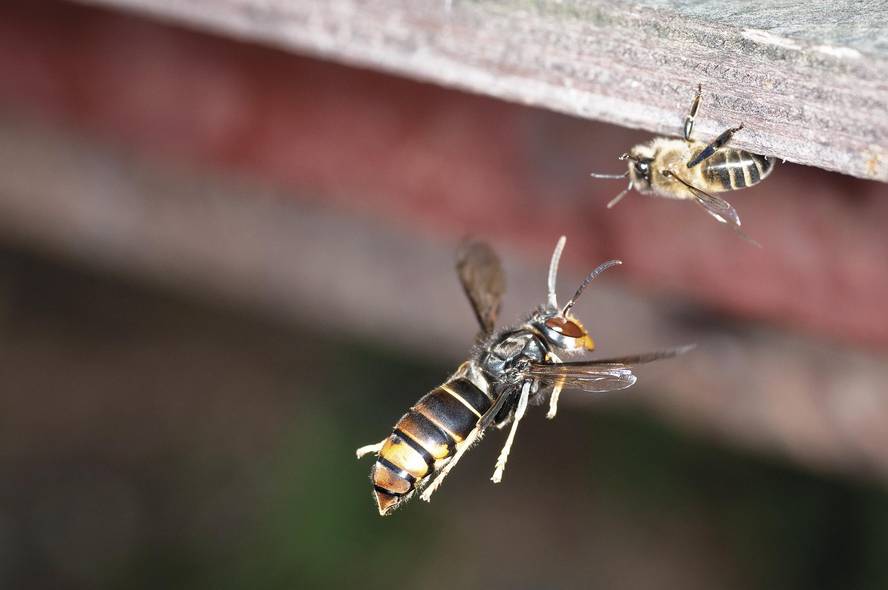
Ed. © Danel Solabarrieta
Arturo Goldaracena (Entomologist, Neiker-Tecnalia)
"The Velutina scooter apparently arrived in Bordeaux in a cargo of kiwi. If all the goods are not analyzed and the fauna and flora they contain are not cared for, Europe will become a great bazaar of invasive species."
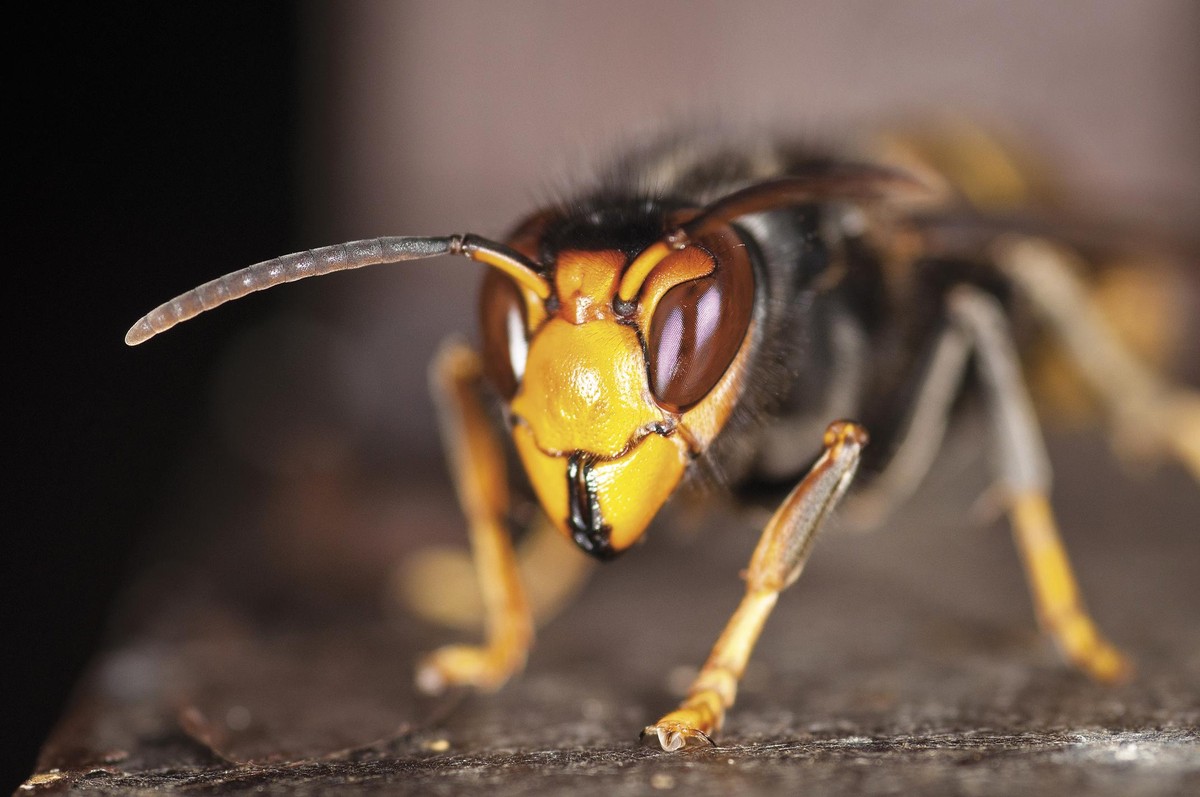
Ed. © Danel Solabarrieta
Julián Urkiola (President of the Association of Beekeepers of Gipuzkoa)
"It has a length of about 3 centimeters and the queen could be 3.5. It has a seven-millimeter punch. The difference between the European wasp (Vespa crabro) and the Asian wasp is only color. The Asian has yellow tips and in the dorsal segments has more black than the European. Black back. The European, on the other hand, has a mahogany color. Two wasps eat bees, European and Asian. But Asians are born ten thousand times more and that has caused a great imbalance."
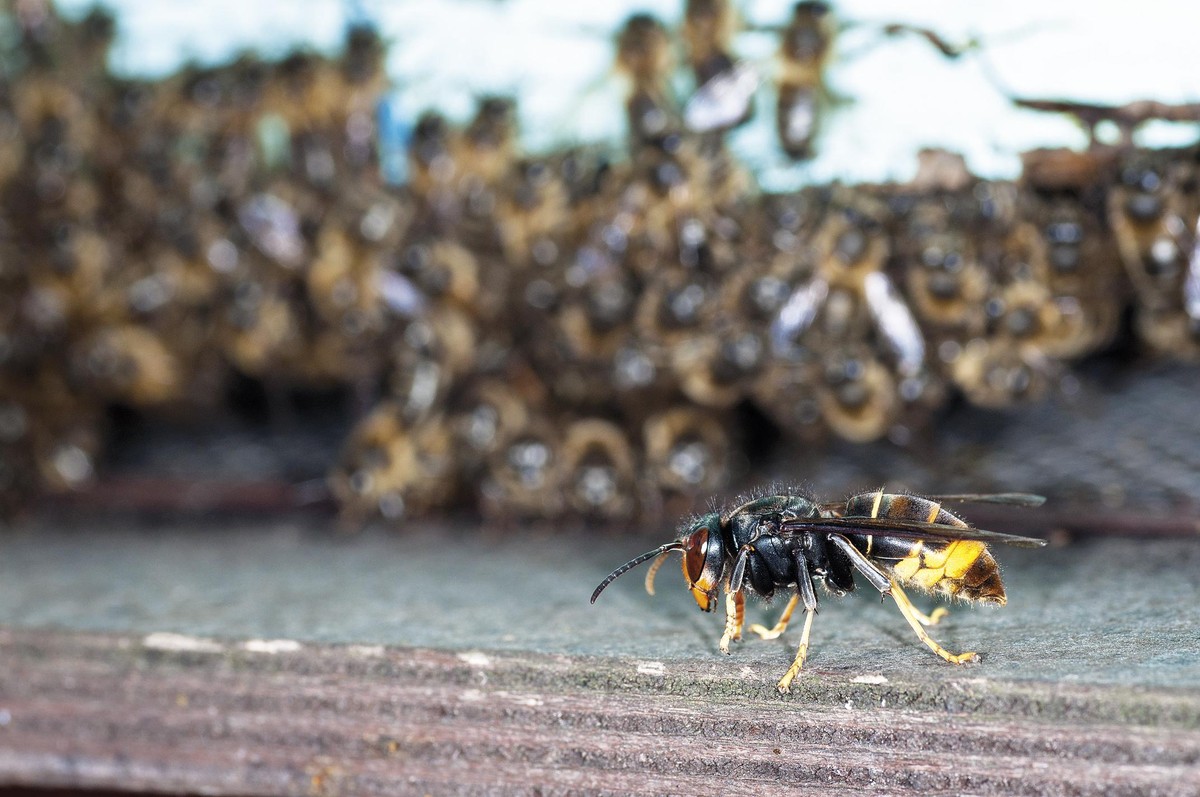
Ed. © Danel Solabarrieta
Arturo Goldaracena (Entomologist, Neiker-Tecnalia)
"I think the bee will never disappear because it is a man-made insect. And will pollination disappear? Neither. In the ecosystem there are thousands of insects that work only pollination. Another thing is what economic problems the disappearance of bees poses."
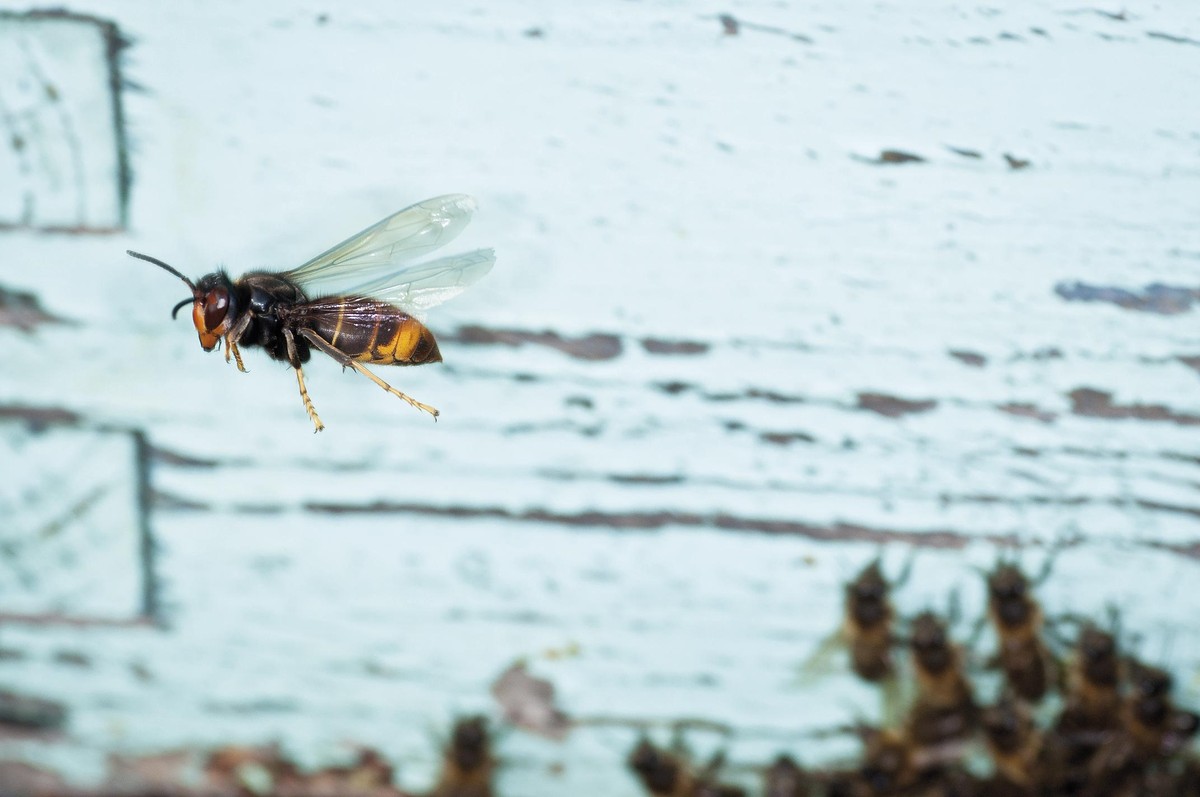
This photo won the accésit in the general category at the Fotciencia 2012 awards. Fotciencia is a scientific photography competition organized by FECYT and CSIC. Ed. © Danel Solabarrieta
Julián Urkiola (President of the Association of Beekeepers of Gipuzkoa)
"The bee that returns to the hive is tired and loaded, it is the prey most beautiful for the wasp. Hold the bee by the neck and take it to the corner of the tree, which has already strangled. There he starts eating his head, as we eat prawns, he sucks it. Then cut the bee head and pull it. And the gut begins to eat inside. Inner honey that eats everything you can eat. Finally, he cuts on the back, cuts the wings and legs and takes the best boat to the nest so that the Queen and the children eat."
--> Interview with Julian Urkiola in the Norteko Ferrokarrila program
--> Reportaje "La picadura al ecosistema" en el programa de televisión Teknopolis con imágenes del dia en el que se realizaron las fotos
Danel Solabarrieta (Amateur photographer)
The photographs were taken by Danel Solabarrieta in a hive in Usurbil. He worked with dozens of wasps flying. A difficult work, because fast moving animals had to focus closely, but at the same time fruitful: one of the photographs he took won recognition in the general category at the 2012 Fotciencia Awards.
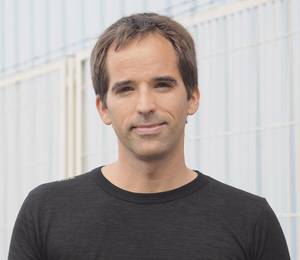
Ed. International trade
"First we measured the light and setting the parameters of the light, I tried to focus it well. The goal was to get the eyes out of the well-focused wasps. This means that only one in twenty photographs will serve. I had to have the wasp very close to the target, about ten centimeters. He did not focus on the target, but kept it fixed, moving the camera forward and backward. In the end I chose among those who had the best framing eyes. Sometimes I frame them again. That is, the frame I have done later.
For these photos it is about spending time. Make some five hundred photos, for example --the more, the better -, and then make a very rigorous selection, choose one or two better photos. It is not possible to go, make two or three photos in five minutes and take them out well.
I am very happy with the award. In addition to taking the photo, I did another work for the prize with the photo presented: I documented myself and with it I prepared a text to help the photo so that what looks attractive. And it's been rewarded, I'm happy."










